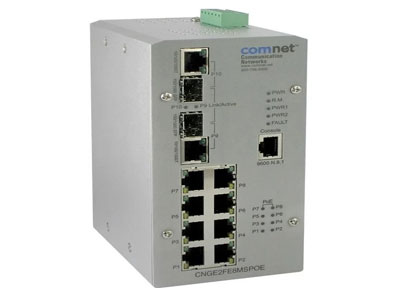Key Takeaway
Industrial Ethernet is used to connect and manage devices in industrial environments. It ensures seamless communication between machines, sensors, controllers, and computers. Unlike standard Ethernet, it is designed to handle harsh conditions like extreme temperatures, dust, and vibrations. This makes it reliable for critical processes in factories and industrial plants.
It is widely used for automation, monitoring, and control systems in industries like manufacturing, energy, and transportation. Industrial Ethernet supports real-time data transfer, ensuring machines operate efficiently. It also enables remote monitoring and helps improve productivity by reducing downtime.
Primary Applications of Industrial Ethernet in Manufacturing
In manufacturing, Industrial Ethernet is the backbone of automation systems. It connects machines, PLCs (Programmable Logic Controllers), sensors, and actuators, ensuring they work together seamlessly. This is essential for coordinating production lines, where precise timing and data accuracy are critical to avoid bottlenecks and errors.
Industrial Ethernet also supports real-time data transfer, which is vital for monitoring and controlling equipment in manufacturing processes. For example, it can detect faults in machines and immediately relay this information to operators, reducing downtime and improving productivity.
Additionally, it integrates easily with other systems, such as Enterprise Resource Planning (ERP) and Manufacturing Execution Systems (MES). This enables manufacturers to analyze production data, optimize workflows, and respond to market demands faster. Industrial Ethernet’s reliability and scalability make it a preferred choice for modern manufacturing facilities.

The Role of Industrial Ethernet in Smart Factories
In smart factories, Industrial Ethernet is the backbone that connects advanced technologies like IoT, robotics, and artificial intelligence. It enables seamless communication between machines, sensors, and cloud-based systems, which is essential for achieving high levels of automation and efficiency.
One of its key roles is supporting predictive maintenance. By continuously collecting data from sensors, Industrial Ethernet helps identify potential issues before they lead to equipment failure. This minimizes downtime and extends the lifespan of machinery.
It also facilitates real-time analytics, allowing manufacturers to make data-driven decisions. Whether it’s optimizing energy usage or improving production speed, Industrial Ethernet ensures that smart factories operate at peak performance. Its ability to integrate diverse technologies makes it a cornerstone of Industry 4.0.
Enhancing Machine-to-Machine CommunicationWith Industrial Ethernet
Enhancing Machine-to-Machine CommunicationWith Industrial Ethernet
How Industrial Ethernet Improves Network Scalability
Industrial Ethernet is inherently scalable, making it suitable for networks of all sizes, from small facilities to large-scale industrial plants. Its ability to integrate new devices and systems without disrupting existing operations is a significant advantage in dynamic industrial environments.
It supports both wired and wireless connections, enabling manufacturers to expand their networks as needed. For example, a factory can start with a basic setup and gradually add more machines, sensors, or remote monitoring systems without overhauling its infrastructure.
Additionally, Industrial Ethernet’s compatibility with a wide range of devices and protocols ensures seamless integration. It also provides redundancy features, ensuring that the network remains operational even as it grows. This scalability makes Industrial Ethernet a future-proof solution for industries looking to expand their automation capabilities.
Industrial Ethernet for Safety-Critical Applications
Safety is a top priority in industrial environments, and Industrial Ethernet plays a key role in ensuring it. It supports safety protocols, such as Safety Integrated Level (SIL) standards, which enable safe communication between devices like emergency stop buttons, light curtains, and safety controllers.
One of its standout features is deterministic communication, ensuring that safety-critical signals are transmitted instantly and reliably. For instance, in case of a malfunction, Industrial Ethernet can immediately trigger safety mechanisms to prevent accidents.
It also enables remote monitoring, allowing operators to oversee safety systems in real-time. This not only improves response times but also enhances overall workplace safety. By integrating safety with operational efficiency, Industrial Ethernet ensures a secure and productive industrial environment.
Conclusion
Industrial Ethernet is more than just a networking technology—it’s the backbone of modern industrial automation. Its ability to support real-time communication, scalability, and safety-critical applications makes it indispensable in today’s fast-paced industrial environments.
As industries continue to adopt advanced technologies like IoT and AI, Industrial Ethernet will remain a key enabler of efficiency and innovation. By investing in this robust and flexible networking solution, industries can ensure their operations are ready for the future.
